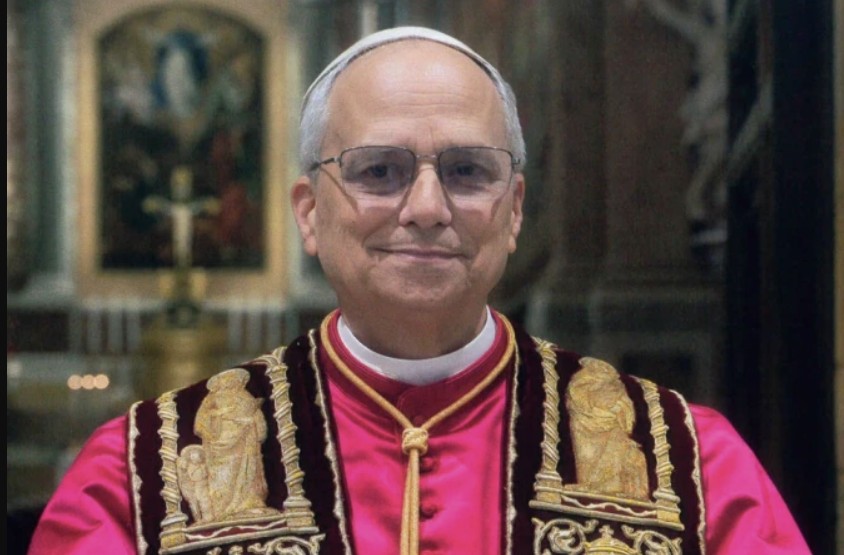Officially, there are still only two genders, it remains a sin to change your gender, and marriage is exclusively between a man and a woman. While gays and transgender individuals are welcomed in the Church for worship and blessings, their actions are considered sinful and they are urged to repent.
Critics attack Christianity and the Catholic Church in particular for being unyielding or failing to “get with the times,” but the Church has maintained its core beliefs precisely because this constancy has enabled it to survive since 33 AD through every societal shift that has occurred over the past two millennia.
With the election of America’s first pontiff, some speculated that Pope Leo XIV’s progressive views on immigration and social justice might signal broader shifts in Catholic teaching on gender, transgender issues, gay priesthood, or same-sex marriage. However, neither the new pope nor the Catholic Church has yielded to the liberal pressure that has transformed so many other churches and eroded traditional Western values.
Just days into his historic papacy, Leo XIV sent a clear signal about the direction of his pontificate. Speaking to the Vatican’s diplomatic corps on May 16, 2025, the 69-year-old pontiff affirmed that the family is “founded upon the stable union between a man and a woman,” reinforcing the Catholic Church’s unwavering commitment to biblical marriage.
Pope Leo’s statement represents the latest chapter in a remarkable story of institutional consistency. Despite dramatically different leadership styles, geographic backgrounds, and pastoral approaches, three successive popes spanning over two decades have maintained the Church’s foundational teachings on marriage and gender, even as cultural pressures have intensified.
This continuity reflects not personal preference or cultural resistance, but adherence to what the Church considers eternal truth. The substance of Catholic teaching has remained constant while the presentation has adapted to different audiences and eras.
The doctrinal foundation was established under Pope Benedict XVI (then Cardinal Joseph Ratzinger) with the 2003 document “Considerations Regarding Proposals to Give Legal Recognition to Unions Between Homosexual Persons.” This authoritative text, approved by Pope John Paul II, declared unequivocally: “The Church teaches that respect for homosexual persons cannot lead in any way to approval of homosexual behaviour or to legal recognition of homosexual unions.”
The document went further, stating that “legal recognition of homosexual unions or placing them on the same level as marriage would mean not only the approval of deviant behaviour, with the consequence of making it a model in present-day society, but would also obscure basic values which belong to the common inheritance of humanity.” Benedict’s approach emphasized the rational and natural law foundations of marriage, arguing that marriage serves the “common good” by recognizing and protecting “marriage as the basis of the family, the primary unit of society.”
Pope Francis, despite his reputation for pastoral outreach, maintained doctrinal consistency through the 2019 document “Male and Female He Created Them: Toward a Path of Dialogue on the Question of Gender Theory in Education.” While the document emphasized dialogue and listening, it firmly rejected gender theory and affirmed traditional Christian beliefs, supported by biology. The document criticized ideologies that “assert themselves as absolute and unquestionable, even dictating how children should be raised,” and maintained that biological sex determines gender identity. It reinforced the Church’s teaching that there are fundamentally two genders, male and female, as created by God.
Even Francis’s later allowance of blessings for same-sex couples came with strict limitations, explicitly stating that such blessings could not “be imparted in concurrence with the ceremonies of a civil union” and cannot be performed with any “clothing, gestures or words that are proper to a wedding.”
Pope Francis’s final major statement on these issues came through “Dignitas Infinita” in April 2024, which condemned both “gender theory” and “sex-change” surgeries as violations of human dignity. The document stated that “any sex-change intervention, as a rule, risks threatening the unique dignity the person has received from the moment of conception.” Francis had previously called gender theory “the ugliest danger” of our time, telling an audience in March 2024 that “cancelling out the differences [between genders] means cancelling our humanity.”
Pope Leo XIV’s early statements suggest continuity with his predecessors, stating that “the idea of promoting gender ideology is confusing because it seeks to create genders that don’t exist. So God created man and woman, and the attempt to confuse ideas from nature will only harm families and people.”
However, Leo has also emphasized building bridges, saying from St. Peter’s balcony that the Church must be “a missionary church, a church that builds bridges, establishes dialogues” and stressed the need “to be able to receive everybody that needs our charity, our presence, dialogue and love.”
What emerges from this 22-year span is remarkable institutional consistency. This consistency suggests that Catholic teaching on these matters transcends individual papal preferences or cultural backgrounds. The Church’s position is rooted in what it considers unchanging theological principles rather than temporal cultural attitudes.
As Pope Leo XIV begins his papacy, early indications suggest that while his pastoral approach may differ from his predecessors, the fundamental teachings that have guided the Church for over two decades, and the two millennia before, will remain unchanged.
Read the full article here


